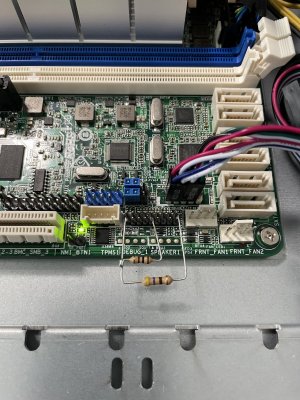I have system with a ASRock H97M Pro4 board that suddenly stopped working. When I attempt to boot, the power turns on, but there is no VGA output, no HD activity LED, only some USB peripherals get power.
I checked all the connectors, CMOS battery, and cleared CMOS. I connected a speaker to the motherboard and there is no post beep of any kind.
When I power down by holding the power button for a few seconds, and attempt to start the system a second time, the PSU will spin up for a few seconds, stop for a few seconds, and keep cycling on and off. I tried a good PSU from another system and the exact same thing happens.
Anybody see something like this where the power cycles on and off every few seconds?
I checked all the connectors, CMOS battery, and cleared CMOS. I connected a speaker to the motherboard and there is no post beep of any kind.
When I power down by holding the power button for a few seconds, and attempt to start the system a second time, the PSU will spin up for a few seconds, stop for a few seconds, and keep cycling on and off. I tried a good PSU from another system and the exact same thing happens.
Anybody see something like this where the power cycles on and off every few seconds?
![[H]ard|Forum](/styles/hardforum/xenforo/logo_dark.png)

